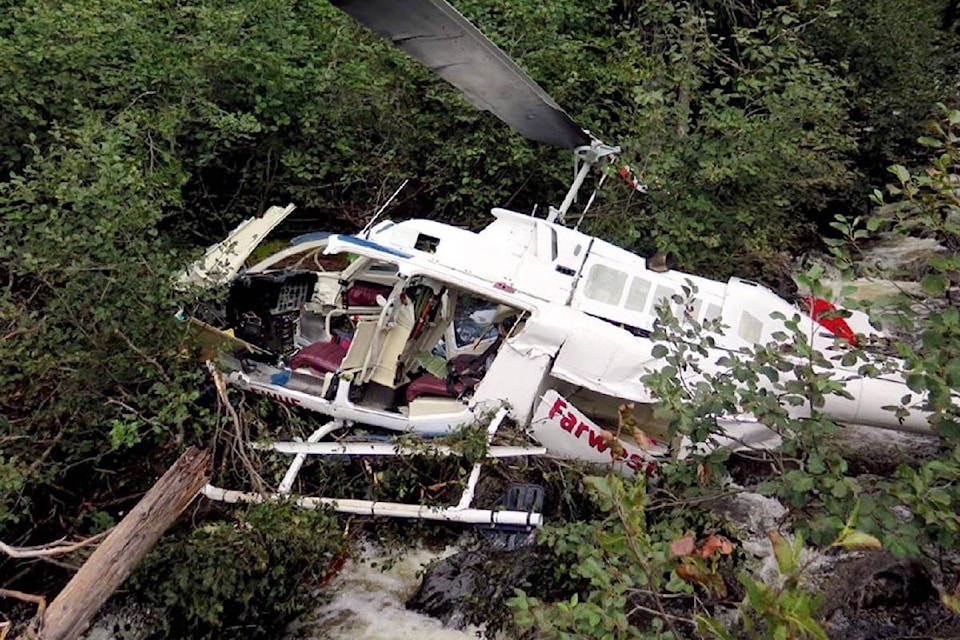A pilot’s attempt to correct a perceived power failure led a helicopter crash that left the pilot severely injured at Deception Mountain (north of Mahood Lake) in September 2016.
A report released Thursday by the Transportation Safety Board of Canada (TSB) found that the pilot was attempting to turn during his approach but cut that short to go with a straight-on approach in fear that his helicopter would loose power.
As a result, the helicopter pitched to steep nose-high altitude and with a “popping or banging sound, and several pieces of debris separated from the helicopter.”
The pilot made two more rotations before careening into the old growth trees on the mountain and eventually coming to a stop straddling a small, boulder-strewn creek.
The helicopter’s emergency locator transmitter and base camp workers nearby alerted 911.
When the workers arrived at the crash site, they found the pilot still inside and fuel leaking into the creek from the still-running helicopter.
The pilot had serious injuries but was still conscious and was wearing the four-point seat belt and shoulder harness. He was not wearing a helmet.
The board found that the pilot was properly certified and qualified for the flight and given the data available, should have been properly rested before taking off.
The cause of the perceived power fluctuation that caused the pilot to change his approach could not be identified.
